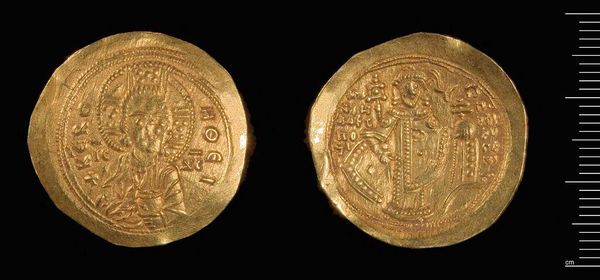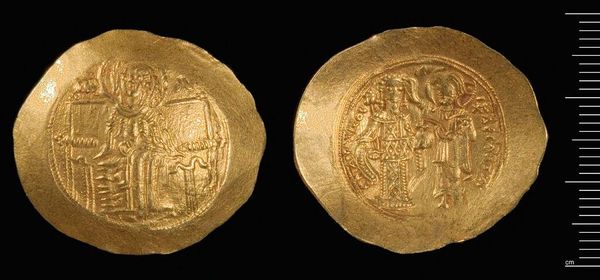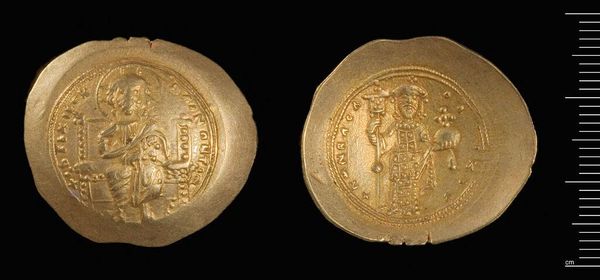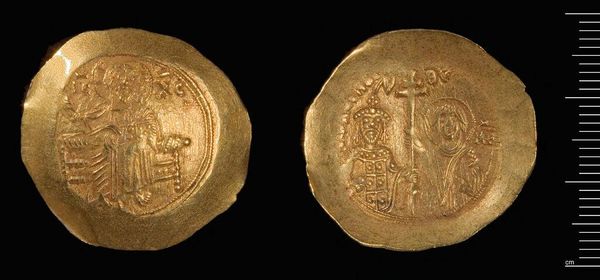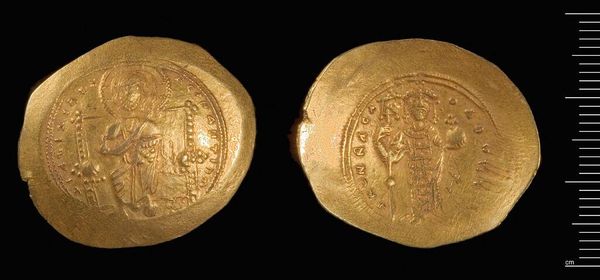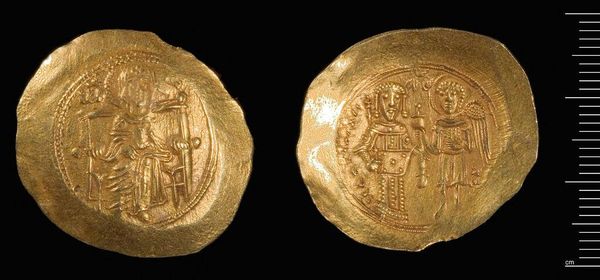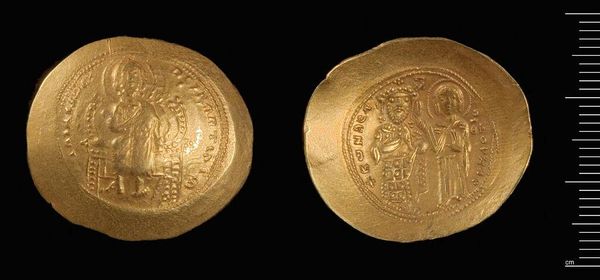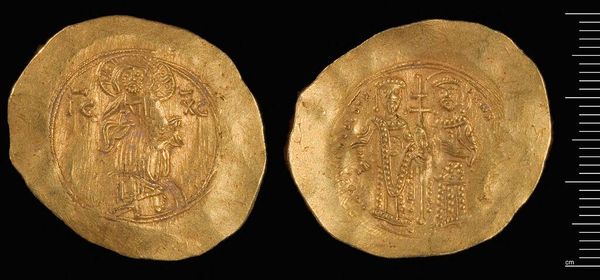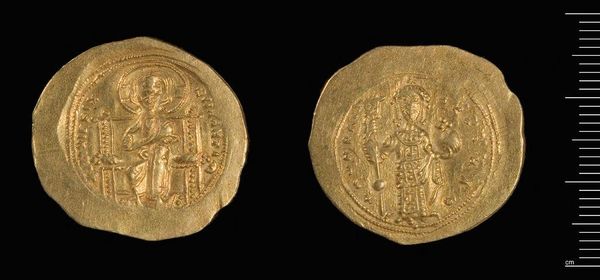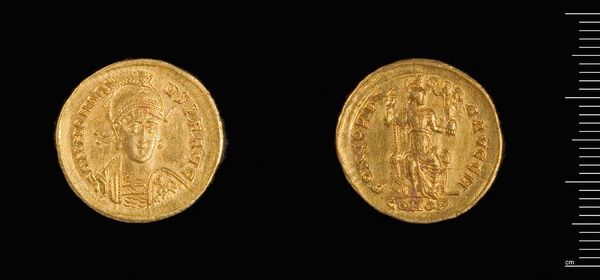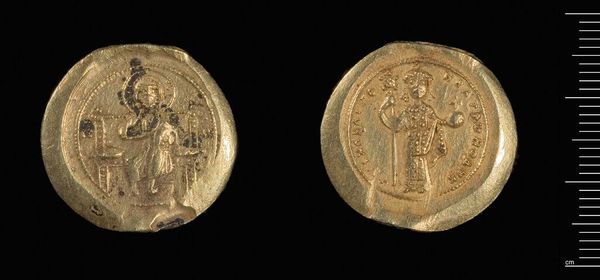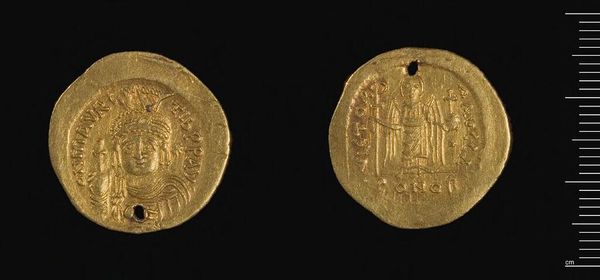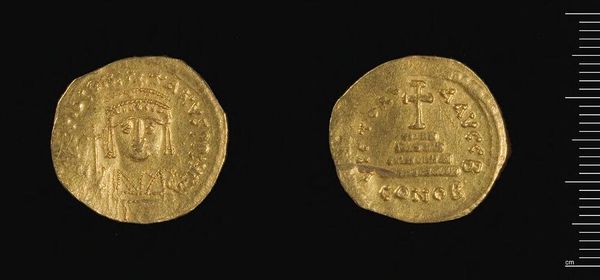
Histamenon of Constantine X Ducas, Constantinople c. 11th century
0:00
0:00
Dimensions: 4.36 g
Copyright: CC0 1.0
Curator: This is a Histamenon of Constantine X Ducas, a Byzantine coin currently residing at the Harvard Art Museums. Struck in Constantinople, it's a small but potent symbol of imperial power. Editor: My first impression is the sheer weight of history it carries, and the question of how such a small object could wield so much power. Its golden sheen is somewhat worn, hinting at the passage of time and countless transactions. Curator: Indeed. These coins were not mere currency; they were carefully designed propaganda. Notice the image of Christ on one side, and Constantine X himself on the other. Each detail reinforces the emperor's divine right to rule. Editor: Yes, and that connection to the divine is everything. It’s a visual claim to authority, legitimizing Constantine's power through religious iconography. What statements were being made to the populations encountering and using this currency? Curator: Absolutely. The Histamenon served as a constant reminder of the emperor’s authority, circulating widely within the Byzantine empire and even beyond, shaping perceptions of Byzantine power and wealth. Editor: Thinking about its global circulation, it's a powerful reminder of the material conditions of power—who controls resources, and how those resources reinforce existing social orders. Curator: Examining it, we are reminded of the complex interplay between economic systems and assertions of power. Editor: And it encourages us to consider the enduring legacy and material realities of those power dynamics today.
Comments
No comments
Be the first to comment and join the conversation on the ultimate creative platform.
